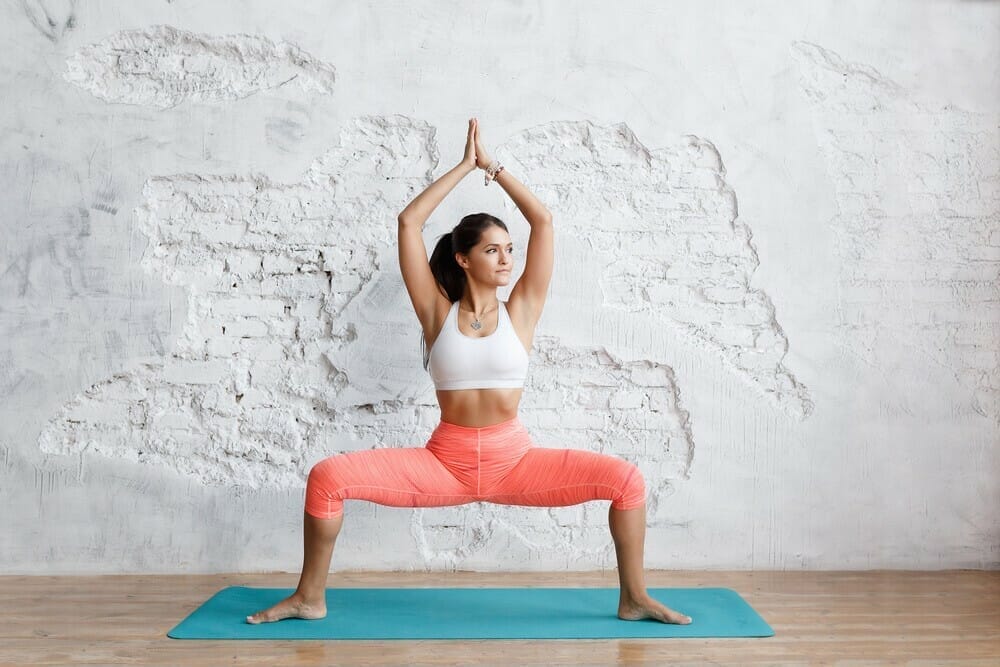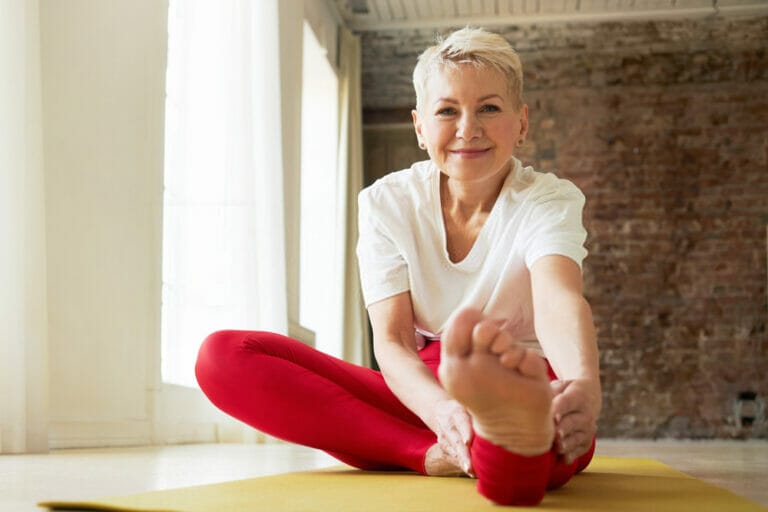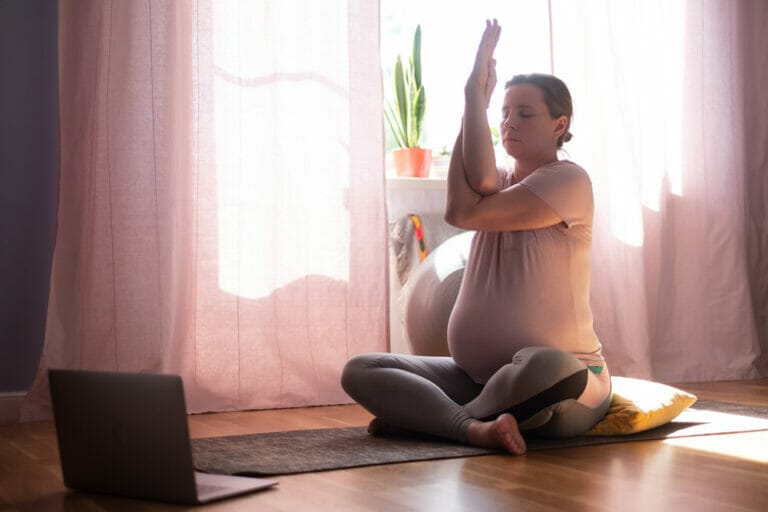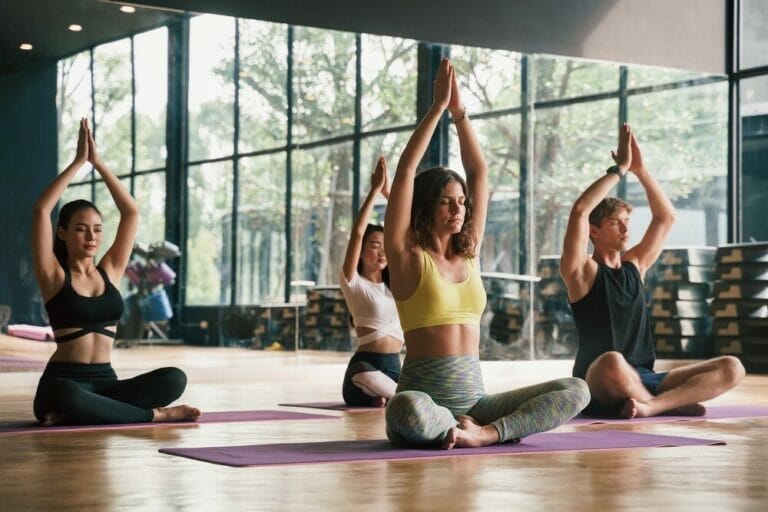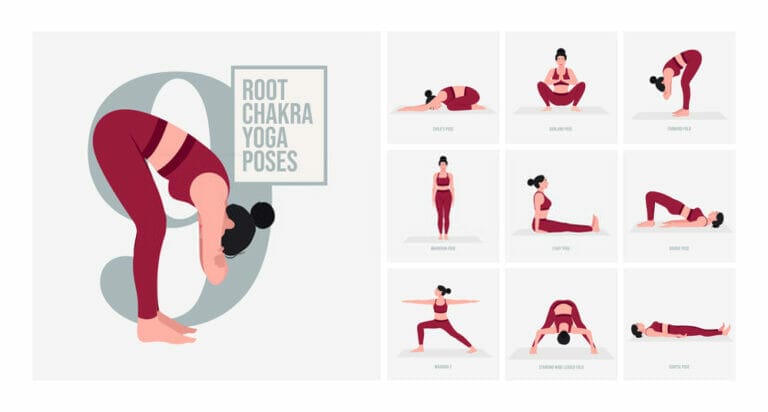The Amazing Benefits Of Easy Cool Yoga Poses
Are you new to yoga? Do you often find yourself struggling with yoga poses or wondering how to do them? If so, this article is for you.
Today, we are going over some of the most common and basic yoga poses! These easy yoga postures are perfect for beginners and leave you feeling refreshed, energized, and more balanced.
As a novice in yoga, you may be intimidated by the number of positions and their strange-sounding titles. But, fear not because here are some easy yoga poses for you to try, and they are pretty simple.
The success of the postures depends on your capacity to hold them. So if you find that a position is challenging, stay with it for just a few breaths instead of rushing to the next pose, which may be equally challenging.
Now, let’s look at the basic easy yoga poses and how to do them!
Mountain Pose- Sanskrit: Tadasana
This position teaches how to stand majestically still, like a mountain. The name comes from the word ‘Tada,’ which signifies a mountain.
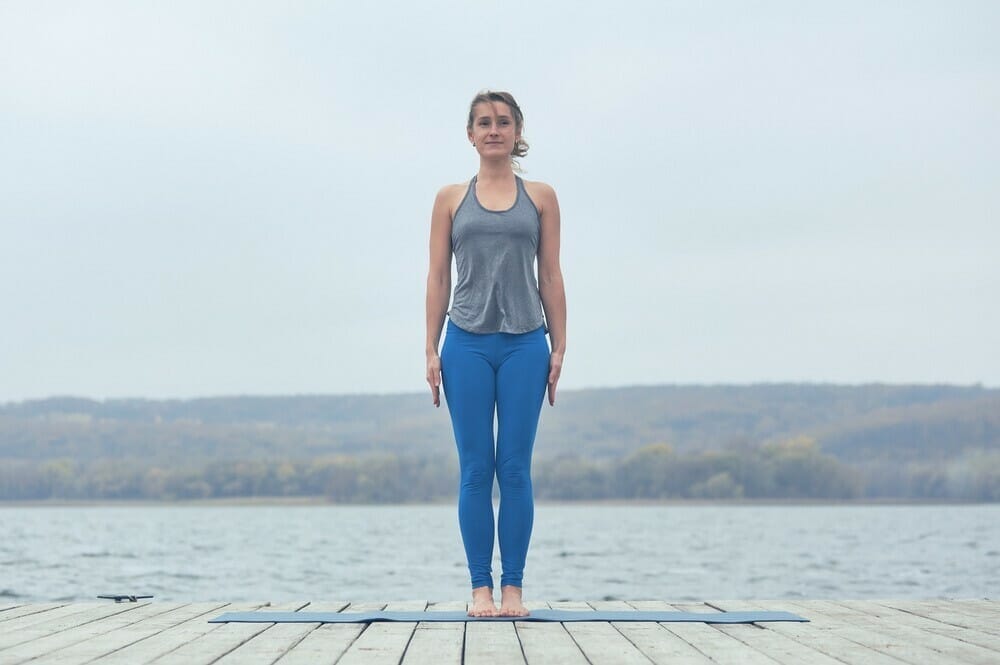
Mountain Pose is the foundation for all standing poses; it engages the major muscle groups and promotes attention and concentration. Mountain stance may appear to be "just standing," but a lot is going there.
Stand with your feet hip-width apart or together. Grasp the ground with all four corners of your feet. Pull your shoulder blades down your back, and elevate the top of your head.
Engage your thighs, draw in your abdominal button, and extend your spine. Face the wall with your hands up, unfurrow your brow and relax your jaw. Take a deep breath.
Benefits
It improves equilibrium and brings your focus back to the present moment.
Chair Pose- Sanskrit: Utkatasana
The Chair Pose is a great pose that requires a lot of balance and concentration. This pose helps strengthen the legs, ankles, and abdominal muscles, make your body more flexible and help you become an all-around athlete.
Begin in Mountain Pose. Raise your arms, spread your fingers, and reach up through your fingertips as you inhale. Sit down as you exhale, as if you were sitting in a chair.
Shift your weight on your heels and extend your spine. Lift and extend your arms as you inhale. Sit deeper into the posture as you exhale.
Benefits
This warming standing posture strengthens your legs, upper back, and shoulders. Just remember to take deep breaths.
Downward-Facing Dog- Sanskrit: Adho Mukha Svanasana
Downward Dog is utilized in most yoga practices and programs to stretch and strengthen the whole body. It might be the first posture you learn while starting a yoga practice; it serves as a transitional pose and a resting position.

Walk your hands 6 inches in front of you on all fours. To extend your spine, tuck your toes and raise your hips up and back. To put your weight back into your legs if your hamstrings are tight, keep your knees bent.
Spread your fingers wide, push your hands together, and twist your arms so that your biceps are facing each other. Return your thighs to the wall behind you.
Benefits
This traditional posture opens the shoulders, lengthens the spine, and stretches the hamstrings.
Warrior I- Sanskrit: Virabhadrasana I
Warrior posture is crucial in yoga practice for increasing strength and stamina. It boosts our confidence and stretches our hips and thighs while strengthening our entire lower body and core.
Stand with your feet 3–4 feet apart and 3–4 feet apart. Shift your right heel outward so that your toes point slightly inward. Extend your left foot 90 degrees. Align the arch of your left foot with the arch of your right foot.
To protect the knee joint, bend your left knee to a 90-degree angle, keeping the knee in line with the second toe. Next, stretch your straight back leg and ground it into your back foot.
Bring your arms to a T at shoulder height on an inhale. Draw your shoulder blades down the back of your neck. Spread your fingers and place your palms down. Examine your forefingers. Sink deeper into the stretch as you exhale.
Benefits
A standing position with the word “warrior” in its name may not seem very zen, yet it may help quiet and stabilize your mind. It is more complex than it appears, as it strengthens your legs and ankles while improving stamina.
Tree Pose- Sanskrit: Vrksasana
The tree is an excellent balance pose for beginners to practice. It is an easy pose while you learn to breathe while standing and maintaining body balance on one foot. In addition, it imitates a tree’s stable posture.
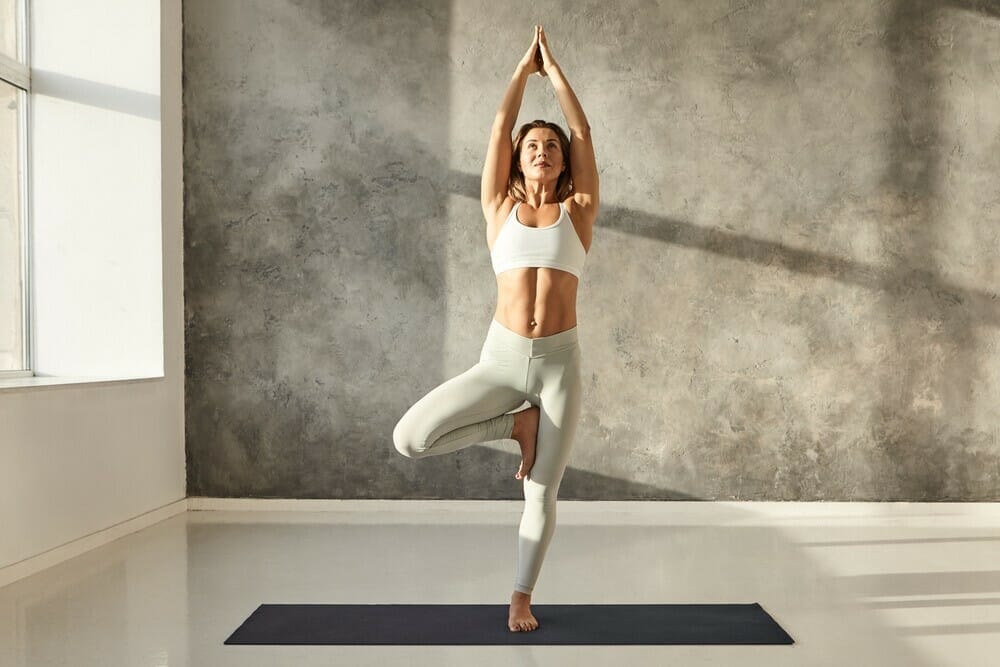
Begin in Mountain Pose. To assist your balance, find a fixed point in front of the room and look at it.
As you inhale, shift your weight to your left foot while lifting your right foot an inch off the floor. Bring the foot to your shin or inner thigh with your right hand. Avoid immediately putting your foot on your knee.
Exhale by grounding through your standing leg and lengthening through the crown of your head. Next, make prayer hands by bringing your palms together in front of your sternum. This pose is also among the most effective standing hip opening yoga poses.
Benefits
By strengthening the arches of the feet and the outer hips, this position improves focus and balance.
Bridge Pose- Sanskrit: Setu Bandha Sarvangasana
Bridge position (Setu Bandhasana) is used to bridge the gap between the body and the mind. A rear bend is a counter posture to a forward bend. The bridge is a beautiful beginner’s backbend that stretches and strengthens the front and back body.
Lie faceup on the floor. Knees bent, feet flat on the floor, arms at sides, palms facing down. Maintain a parallel and hip-width distance between your feet, with your heels stacked beneath your knees.
Activate through the legs and glutes on an inhalation. Then, lift your hips off the floor and toward the sky by pressing the floor away with your feet.
If your shoulders are stiff and you need additional leverage, try raising your hips while gripping the sides of your yoga mat.
You could also want to wriggle your shoulders beneath your chest and interlace your fingers below your “bridge.”
Benefits
This active backbend stretches your neck and spine while opening your chest. It can relax the mind, relieve anxiety, and aid in digestion.
Seated Forward Fold- Sanskrit: Paschimottanasana
Forward bends are crucial to include in your yoga practice to stretch the hamstrings, lower and upper back, and sides.
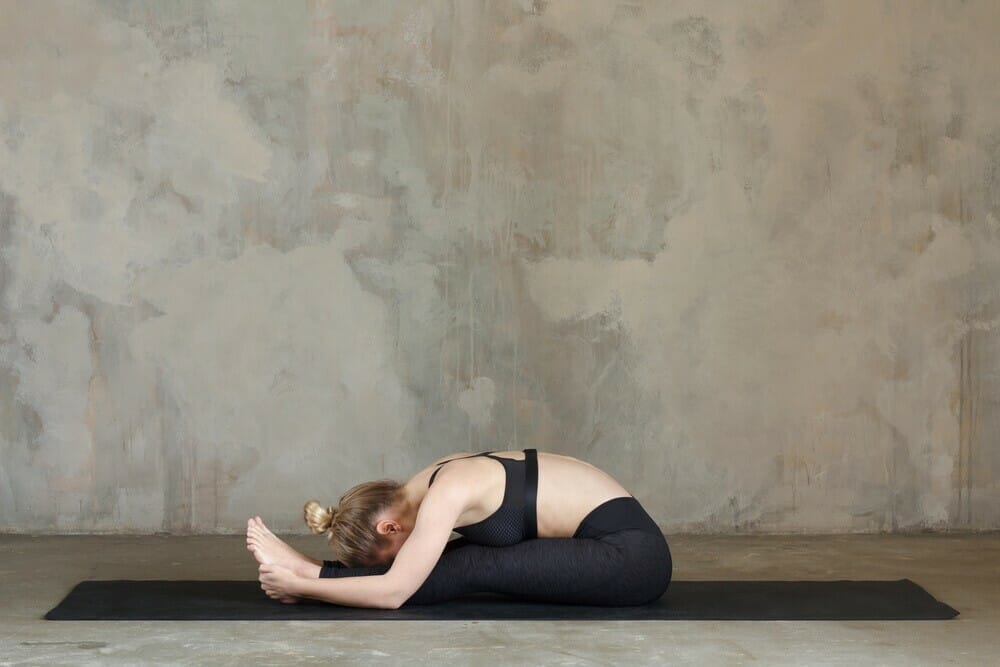
Beginners should start with a seated forward bend to expand the body and learn to breathe through difficult positions.
Sit with your legs straight out in front of you and your thighs firmly planted on the floor. To extend your torso over your thighs, hinge at the hips. Take hold of your feet’ edges.
Benefits
This fold lengthens your back, lengthens your spine, and stretches your hamstrings.
Child’s Pose – Sanskrit: Balasana
A child’s pose can be used to cool down, rest, and reflect when done right after a yoga practice. It is one of the most calming yoga positions.
Kneel on the ground. Sit on your heels, touch your big toes together, and split your knees approximately as wide as your hips.
Exhale and place your abdomen between your inner thighs, your forehead resting on the yoga mat. Place your arms at your sides, palms facing up, close to your feet.
Benefits
This yoga position relaxes the body where you can breathe easily. It also helps to relieve stress and tension.
Corpse pose- Sanskrit: Savasana
We end this routine with Corpse position or Shavasana. It is our resting position. It allows you to patiently unwind from a hard yoga practice, calming the mind and encouraging relaxation.

Lie on your back with your legs straight and arms at your sides, palms down. Close your eyes and allow your breathing to become slow and steady.
Then, release all tension from the body gently, almost like a muscle by muscle release method.
Benefits
A good Shavasana can help release stress and improve your mental focus.
There you go! The most easy-to-follow yoga routine for beginners of all ages. This guide is a tribute to the essential part of any yoga practice – breathing.
Remember always to breathe in the right way when doing any posture and avoid holding your breath, especially during more challenging poses.
Conclusion
Yoga practice has a lot of benefits for your mind as well as your body. It is an excellent way to reduce stress and anxiety, improve concentration and mood, and relieve aches and pains. Yoga is also an excellent method for controlling weight.
By practising these yoga positions, you will find that yoga helps to improve flexibility, balance, strength, and endurance. It is also a way for you to tune with your body and the world around you.
These beginner-friendly yoga positions are perfect for anyone wanting to incorporate yoga into their life. If you are one of those, I hope some of these positions work out well for you.
As with other physical activities, a certain amount of risks are involved when practising yoga. If any injury or pain occurs, discontinue the move as soon as possible. You can consult your health care professional regarding any damage incurred during the yoga practice.
Good luck, yogis!

